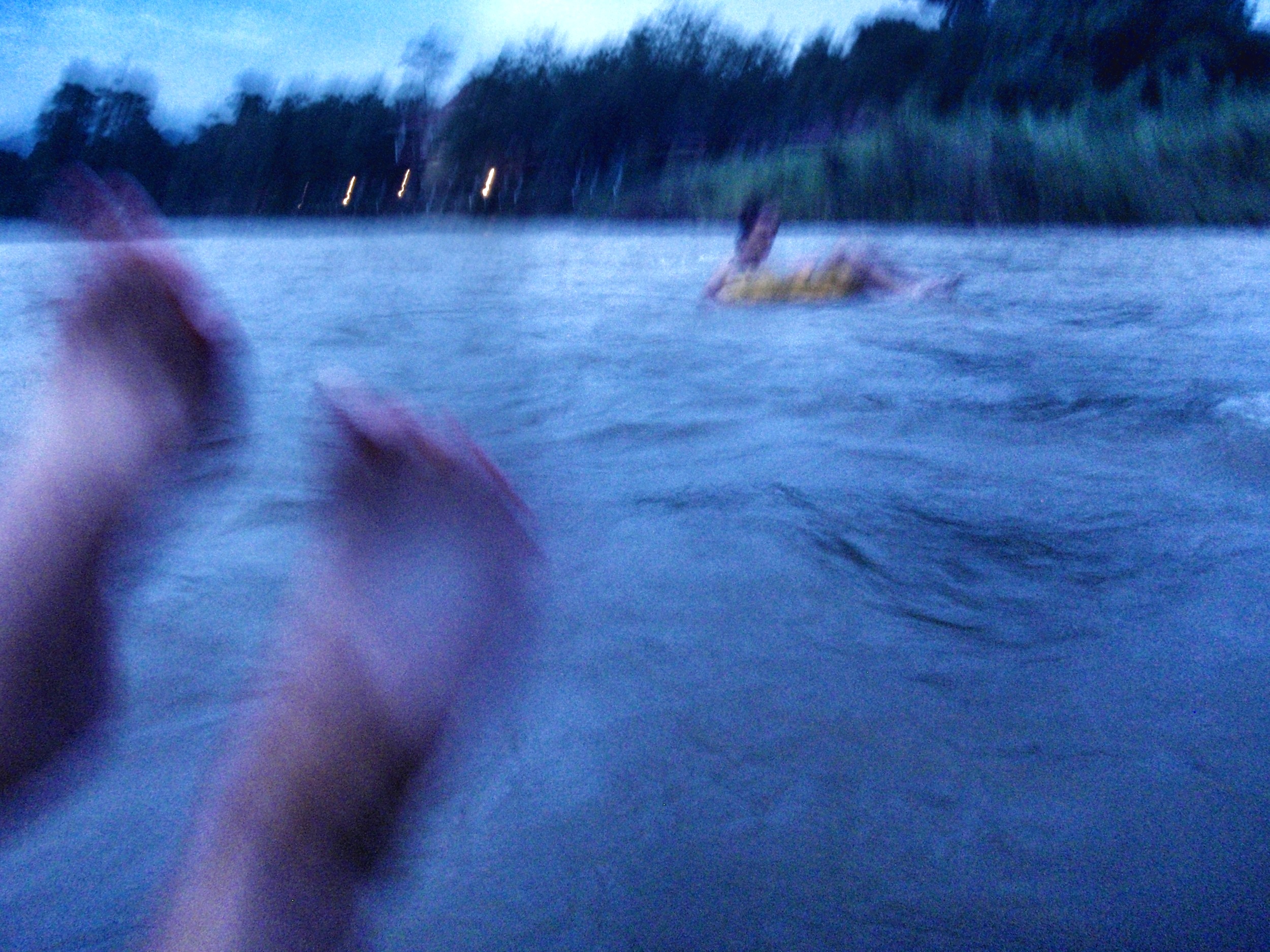Rainy With a Chance of Gibbons

MY STOMACH WAS CHURNING. I was soaked through and had been for the past three days. My three-dollar rubber shoes were heavy with mud, my big toe twice its normal size. Leeches fed on my ankles, and I didn’t even care.
It was almost my turn to connect my pulley to the wet metal line overhead and hurl myself forward above the misty treetops. The forest below, a drab green broccoli salad, disappeared into its own mysterious darkness, bright skinny trunks showing off like a dance troupe’s legs.
Fog like a steam room obscured the line of sight. The heavy twisted cable above, your only lifeline, disappeared into the distance, ending in a sharp floating point that grew longer the farther you traveled.
Bloated river, broken bridge.
—|||—
We were deep in the Bokeo Province in northern Laos for The Gibbon Experience, a haphazardly run, yet terribly fun three-day zip lining adventure. A two-hour drive from Huay Xai, and a seven-hour hike through farmland and jungle, and you arrive - tired, filthy and excited to get airborne.
Sucked the shoes right off your feet.
—|||—
It was the beginning of the rainy season and on the way in the 4x4 waiting half way to carry us to camp had sunk, axle-deep in the suction cup mud and clay. Our team had pushed and pulled the mud-sputtering truck in vain, and giving up, had grabbed the provisions (our food for the next three days) and continued the arduous trek like mules - until we were relieved by actual mules.
Once at camp, we were rushed through the orientation training. Our group had arrived hours later than anticipated and the guides hurried to get us to our treetop rooms for the night. The most vital rules (meaning rules that could end in death if not followed) were:
Bonk the cables in advance to scare off monkeys.
One person to a line at a time.
Pull down hard on the rubber handle to brake. Both hands if you’re not slowing down.
NEVER zip at night.
The lesson ended as fast as it began, then we were quickly strapped up and pointed toward our first jump - at night… Nervous for the lack of visibility, and straight up frightened by being asked to ignore an extreme warning that had just been delivered moments ago, I still volunteered to go first. After all that rugged trudging, I was ready to fly for a minute - and get to a dry bed.
Brushing with rainwater high in the forest canopy.
—|||—
Zip lining is fun and all, but for us it was just an added bonus.
The real reason we were there was to catch a glimpse of the endangered gibbon, a lesser ape who likes to sing at sunrise. A sight to see, they walk upright like a man, live to about 35-years of age in the wild, and are serial monogamists. Swift and agile, a gibbon is to the treetops as a racehorse is to the race track. They can hit speeds of up to 34 mph, giving them a superlative in speed.
The Gibbon Experience, while a haven for backpackers and thrill seekers, is an innovative conservation project which uses traditional knowledge and empowers local communities to manage their own environmental assets sustainably.
Misty morning view.
Income from this ecotourism enterprise is channeled into a comprehensive locally-run management program which ensures the ongoing survival of the local flora and fauna. Local hunters are incentivized to forego collecting bush meat to become tour guides. Reducing poverty while relieving pressure on the natural resources, this is environmentally-responsible tourism.
—|||—
Sleeping in the forest canopy and waking with the sun gives one a fair shot at seeing these boisterous beauties, and I must admit, the gibbon-song alarm clock makes my Marimba ringtone sound as boring as a leaky faucet. Their morning medley was a choir of crashing crescendoes and deep throat sounds that made the hairs on the back of my neck stand on end.
Our guides ditched the breakfast preparations and scrambled out, untethered, onto knotted branches, more than 100 feet above the ground. Pointing out the hyper primates in the distance, their end goal was finally achieved.
There’s only one monkey on that line.
Seeing their sinewy black limbs wave to the rhythm of their calls, I forgot the mud, the rain, and the leeches. I forgot my aching muscles, and my battered big toe. I forgot the dull pain of smashing into a tree when the nonstop rain bested my hand brake. I forgot the feeling of being trapped at night by the unseen creature rifling through our treehouse kitchen, 120 feet off the ground. I forgot that I had almost lost Fernando off the top of a speeding jeep.
Every one of the 12 species of gibbon in the world is endangered, and on this day we saw them healthy, happy and at home in the jungle canopy. Not in a zoo, but on their own turf, the way they’re meant to be seen - singing at the top of their lungs at the sunrise, letting the other gibbon families know who’s boss; especially the new (relatively) hairless family wearing colorful rags who can’t seem to navigate the treetops without a steel cable.
VERDICT: Mostly Harmless - but you might want to skip the rainy season.
Mission accomplished - now it’s time for a shower.
LINKS:
Bokeo Province: The smallest province in Laos. In the northwest.
The Gibbon Experience: A tourism-based conservation project known mainly for its canopy set-ups featuring tree houses and zip lines.
Huay Xai, Laos: Capital of the Bokèo Province in Laos, across the Mekong River from Thailand.
Gibbon: A small, agile, lesser ape which walks upright.












